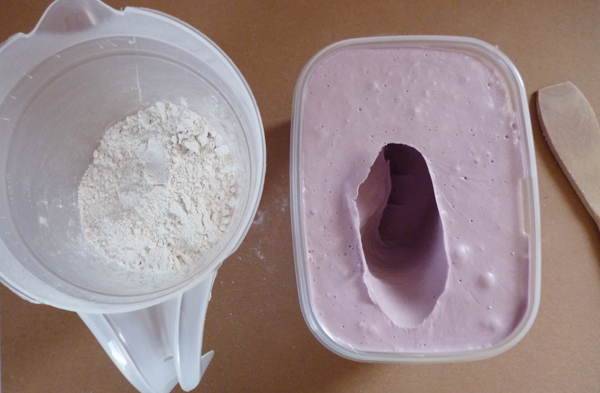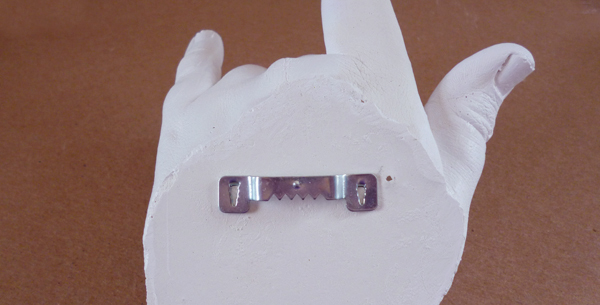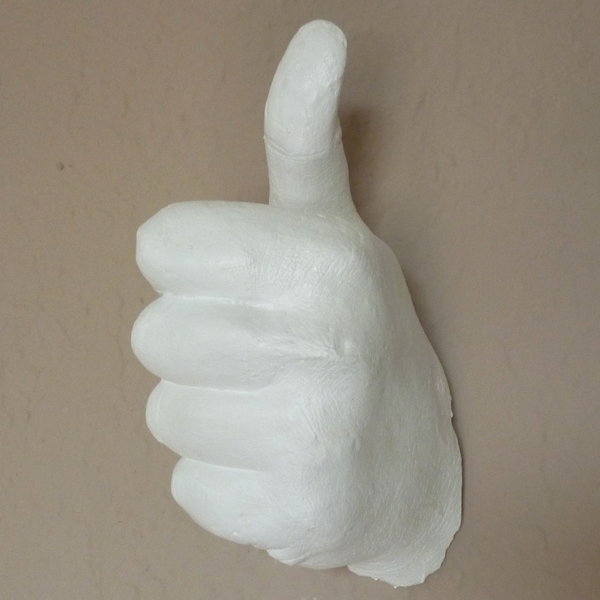DIY Plaster Hands with Alginate!
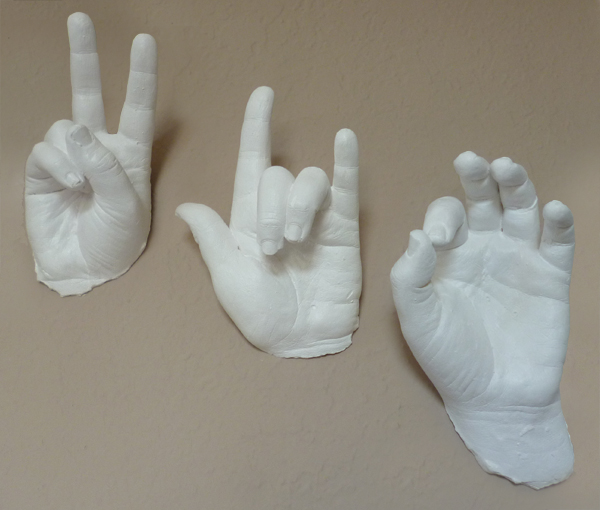 SUPPLY LIST:
pitcher
dry measuring cup
liquid measuring cup
wooden spoon
disposable bowl
alginate
plaster of Paris
knife
self adjusting (sawtooth) picture hangers with spikes to push in
SUPPLY LIST:
pitcher
dry measuring cup
liquid measuring cup
wooden spoon
disposable bowl
alginate
plaster of Paris
knife
self adjusting (sawtooth) picture hangers with spikes to push in
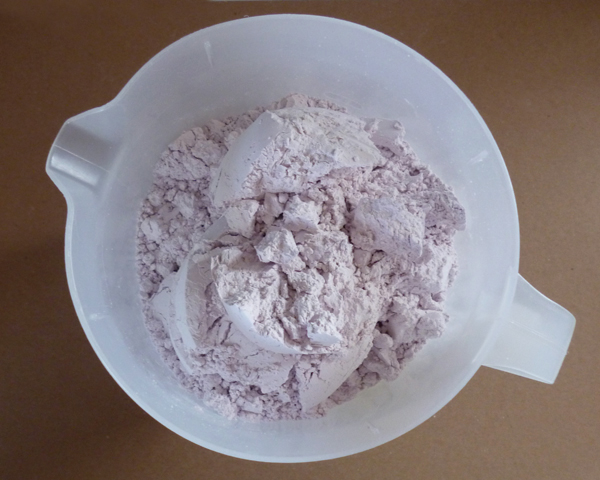 Step 1: First things first – mixing your alginate and transferring it to your container you will be making the mold in. The manufacturer recommends that you use in a 1:1 ratio with water. For my 8 cup container, I used 7 cups of water and 7 cups of alginate. First pour your water into your pitcher and then follow with your alginate powder and stir vigorously. It will begin to set pretty quickly, so really get it stirred quickly. When you are happy that there are no lumps of powder remaining, pour into your mold container.
Step 1: First things first – mixing your alginate and transferring it to your container you will be making the mold in. The manufacturer recommends that you use in a 1:1 ratio with water. For my 8 cup container, I used 7 cups of water and 7 cups of alginate. First pour your water into your pitcher and then follow with your alginate powder and stir vigorously. It will begin to set pretty quickly, so really get it stirred quickly. When you are happy that there are no lumps of powder remaining, pour into your mold container.
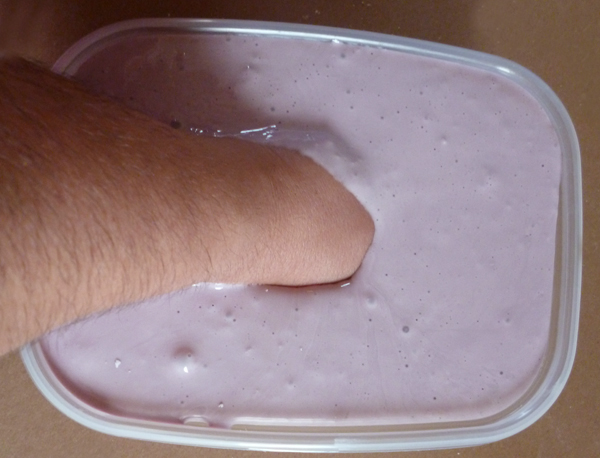
Step 2: Place your hand into the goo. I mean alginate. Make sure that your model’s hand is not touching the bottom or sides. Also be sure not to go into the goo up to the wrist or beyond. You’ll need to go only as far as the wider portion of the hand – go to the wrist and you may not get out of it. Make your model move their fingers around to make sure that you have alginate settles into all of the little pockets and crevices a hand will make.
Sit tight, about 10 minutes or so, as still as possible while the mold begins to set around the hand. Feel the top of the alginate from time to time. When it’s firm to the touch, your model can remove their hand. First, wriggle the fingers around to loosen and then carefully pull the hand completely out of the mold.
Step 3: Mix your plaster of Paris per manufacturers suggestion. Slowly pour the liquid into your mold. About halfway through, roll around the bowl to try and help the plaster up into all of the nooks and crannies. *** NEVER put hands directly into the plaster to form a mold. It won’t work and you’ll lose a finger!
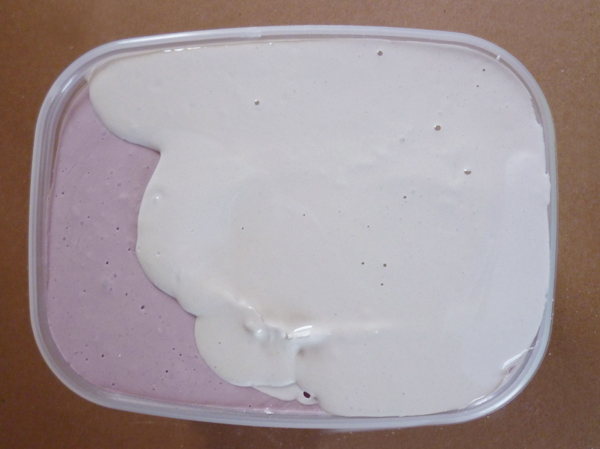
Allow the plaster to fully cover the hole – you can break away the extra later – so no worries there. Finish filling up and tap around the sides of the bowl with your wood spoon to help break up any air bubbles in the mixture.
Move the mold someplace warm for about 4 hours. Most plaster says 1 is adequate but I say the longer the better. Besides – the first hand I did fell apart and that was only an hour. Play it safe!
*** When cleaning your pitcher and utensil you used to mix your plaster, DO NOT wash it out in your sink. Take it outside with the hose. You will encounter some nasty plumbing issues if plaster of Paris sets up in your pipes!
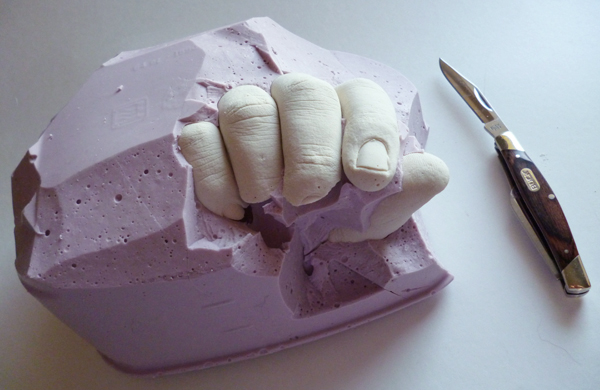
Step 4: Loosen and remove your mold and cast from its container. You may want to go around and use a towel and soak up any excess moisture that is left on the surface. Place the wrist portion of the hand down in front of you, so that the fingers are pointing up at you. Take a sharp knife and gently and slowly carve away bits of the alginate. Take care because when you run into plaster, you can easily nick or cut your cast.
When you’ve finally liberated your hand, place someplace warm (like the garage) for several days to dry completely.
Step 5: If you want to hang your hands on the wall, like I did, push your hangers into the backside of the cast. Even after drying for some time, the plaster will still receive the hangers easily and will stick in very well.
Alginate kits and plaster for this project can be purchased at CC Lowell.
We can answer any questions you have about this project!
CC Lowell
258 Park Ave
Worcester, MA
508-757-7713











